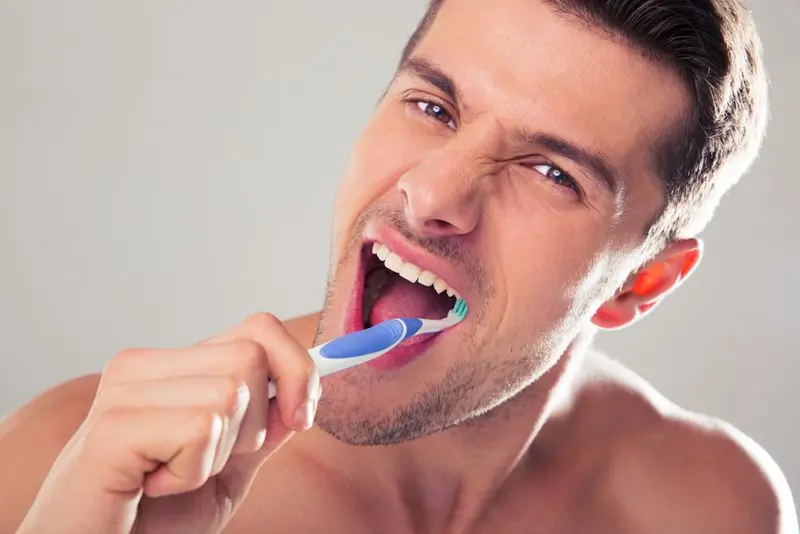Brushing your teeth is an essential part of maintaining good oral hygiene. It helps remove plaque, bacteria, and food particles from your teeth and gums, preventing tooth decay, gum disease, and other oral health problems. However, many people are unsure about the best way to brush their teeth, including the right technique, toothbrush, and duration. In this article, we will explore the importance of proper brushing, compare different brushing techniques, and provide tips on choosing the right toothbrush for effective cleaning.
Brushing Techniques: A Comparison
There are several brushing techniques that can be effective in removing plaque and bacteria from your teeth:
- Bass Technique: Involves angling the toothbrush bristles at a 45-degree angle to the gum line and using gentle, vibratory strokes. This method is particularly effective in cleaning under the gum line and reducing plaque and gingivitis.
- Stillman Technique: Focuses on massaging the gum tissue. It involves placing the bristles partly on the gums and partly on the teeth, then using short, horizontal strokes. This technique is beneficial for stimulating gum tissue and improving blood flow.
- Charter Technique: Recommended for spaces between teeth, gum recession, and after periodontal surgery. It involves placing the bristles at a 45-degree angle towards the chewing surface and using short, circular motions. This method helps clean around orthodontic appliances and areas with gum recession.
Why Circular Motion is Smarter

The best way to brush is to do so in tight, concentric circles. Circular brushing forces you to slow down and helps reduce the pressure you place on your teeth, minimizing the risk of enamel erosion and receding gums. This method ensures that all tooth surfaces, including the chewing surfaces and gum line, are thoroughly cleaned. Additionally, brushing in circles prevents you from glossing over certain areas of your teeth, which can happen with back-and-forth motions.
Back and Forth vs. Up and Down: Why Direction Matters
Brushing back and forth or too vigorously can damage your enamel and irritate your gum tissue. Harsh back-and-forth motions increase the likelihood of enamel wear and gum irritation, especially near the gum line. Instead, focus on using gentle circular motions and proper brushing techniques to protect your teeth and gums. Slower, more deliberate brushing also ensures thorough cleaning of all tooth surfaces.
Choosing the Right Toothbrush for Effective Cleaning
Electric toothbrushes mimic circular motions, providing a deeper clean and making brushing easier and more efficient.

Choosing the right toothbrush is crucial for effective cleaning. Look for one with soft bristles and a small head to reach all areas of your mouth. Electric toothbrushes are particularly effective as they mimic the circular motion recommended for proper brushing. Many electric toothbrushes also have built-in timers to ensure you brush for the recommended two minutes. These brushes can ease the process by performing the circular motions for you, reducing the effort required and providing consistent cleaning results.
Why Two Minutes Matter
Brushing for at least two minutes ensures you clean all quadrants of your mouth effectively. Divide the time evenly among your upper and lower teeth, and pay special attention to molars and hard-to-reach areas. Applying the right amount of pressure prevents damage to enamel and gum tissue. Many electric toothbrushes help you keep track of time with built-in alerts that signal when to switch quadrants.
Don’t Forget Flossing and Tongue Cleaning
In addition to brushing, regular flossing and cleaning your tongue are vital for maintaining oral health. Flossing removes food particles and plaque from between teeth where toothbrushes cannot reach, reducing the risk of cavities and gum disease. Cleaning your tongue helps eliminate bacteria and improves breath. Visit your dentist regularly for professional cleanings and checkups to ensure overall oral health.
Preventing Common Brushing Mistakes
Many people unknowingly make mistakes while brushing, such as brushing too hard, using the wrong technique, or neglecting certain areas. Over time, these errors can lead to issues like bleeding gums, enamel damage, and receding gums. Ensure you follow the correct brushing techniques and replace your toothbrush regularly to avoid these problems. Using a toothbrush with worn-out bristles can reduce its cleaning efficiency, so aim to replace it every three to four months.
The Role of Fluoride Toothpaste
Using fluoride toothpaste strengthens enamel and helps protect against tooth decay. Fluoride also promotes healthy gum tissue, making it a key component of your oral hygiene routine. Dental professionals recommend using a pea-sized amount of fluoride toothpaste for optimal results. Consistent use of fluoride toothpaste ensures long-term protection for both enamel and gum tissue.
Tartar and Plaque: What Proper Brushing Can Do
Proper brushing techniques, particularly circular motions, effectively reduce tartar and plaque buildup. Plaque is a sticky film of bacteria that forms on teeth, while tartar is hardened plaque that requires professional removal. By brushing regularly and thoroughly, you minimize the risk of these harmful buildups, which can lead to gum disease and tooth decay if left untreated.
Conclusion
Proper brushing techniques, combined with the right tools and regular dental visits, are essential for maintaining a healthy smile. Whether you prefer manual or electric toothbrushes, the key is to be consistent and thorough in your oral hygiene routine. For more tips or to schedule your next appointment, contact us at City Dentists. We’re here to help you maintain your oral health.
